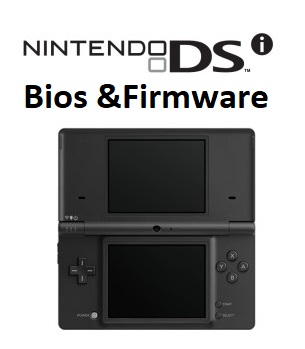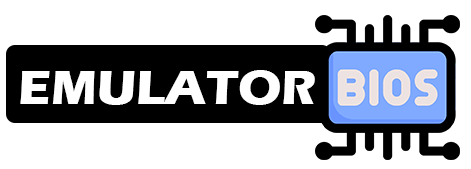The world of gaming is a realm filled with cherished memories and moments that have left an indelible mark on players. Among the many platforms that have shaped the gaming landscape, the Nintendo DS stands out as an iconic handheld console that captured the hearts of players around the globe. With its innovative dual-screen design, touch controls, and diverse library of games, the Nintendo DS introduced a new era of gaming experiences.
In this article, we will delve into the concept of Nintendo DS Bios and Firmware, explore their significance, and guide you through the process of downloading them for the ultimate nostalgic play.

| Bios Name: | Nintendo DS Bios & Firmware |
| User Rating: | 4.5 |
| Emulator: | DeSmuME, NO$GBA, and MelonDS |
| File Size: | 269.94 KB |
| Total Download: | 20061 |
You can download Nintendo DS Bios & Firmware Bios from the above link and play your Nintendo DS games easily in your Nintendo DS Emulator.
The Importance of Nintendo DS Bios & Firmware:
The Nintendo DS Bios and Firmware are integral to the functioning of the console and the games it supports. Without the Bios, the console would be unable to initialize its hardware, making it impossible to load and play games. Firmware, on the other hand, optimizes the performance of the console and ensures that games run as intended. Both components work in tandem to create a seamless and enjoyable gaming experience. You can also check the Scph1001.bin Bios file.
Understanding Nintendo DS Bios:
The Nintendo DS Bios, short for “Basic Input/Output System,” is a fundamental component of the console’s operation. It is a set of software codes that initialize the hardware components of the Nintendo DS, allowing it to boot up, load games, and perform essential functions. The Bios play a crucial role in ensuring the compatibility and functionality of games, as well as providing a seamless user experience.
Functions of Nintendo DS Bios:
The Nintendo DS Bios performs several essential functions:
- Hardware Initialization: When you power on your Nintendo DS, the Bios takes charge of initializing the console’s hardware components. This includes tasks like detecting memory, identifying processors, and setting up the display.
- Device Booting: The Bios is responsible for loading and executing the firmware and operating system of the Nintendo DS. Without the Bios, the console would not be able to start up.
- Game Compatibility: The Bios ensures that the console is compatible with a wide range of game cartridges. It prepares the hardware to communicate effectively with different games.
- Security Measures: The Bios contributes to the security of the Nintendo DS by verifying the legitimacy of game cartridges. It checks for authentication codes to prevent the loading of unauthorized games.
- Error Handling: If any hardware issues arise during startup, the Bios detects and handles errors to prevent system crashes and malfunctions.
Understanding Firmware:
Firmware refers to the software that is permanently embedded within a hardware device. It acts as the intermediary between the hardware components and the operating system, facilitating communication and coordination. In the context of the Nintendo DS, firmware ensures that the console’s hardware and software work harmoniously, enabling games to run smoothly and efficiently.
Functions of Nintendo DS Firmware:
The Nintendo DS Firmware performs several key functions:
- Hardware-Software Interaction: Firmware facilitates communication between the Nintendo DS’s hardware and the games or applications being run. It ensures that the hardware responds correctly to software commands.
- Performance Optimization: Firmware updates can optimize the performance of the console, making it run more efficiently and reducing lags or delays.
- Game Compatibility: Firmware updates can improve the compatibility of the Nintendo DS with newer games, ensuring that they run smoothly without glitches.
- Security Enhancements: Firmware updates can include security patches to address vulnerabilities and protect the console from potential threats.
- Feature Enhancements: In some cases, firmware updates introduce new features, options, or settings to the Nintendo DS, enhancing the overall user experience.
Downloading Nintendo DS Bios & Firmware:
Downloading Nintendo DS Bios and Firmware is a straightforward process that enhances your gaming experience. These files can be obtained from reputable sources online like Emulator-bios.com. To begin, ensure that you are downloading the appropriate Bios and Firmware versions for your specific Nintendo DS model. Don’t try to download file from another site because some sites provide wrong file and Incorrect or incompatible files may lead to errors or malfunction.
Installing Bios and Firmware in Nintendo DS Emulator
Follow these steps to install Bios and Firmware in your Nintendo DS emulator:
- Step 1: Choose an Emulator: Start by selecting a reliable Nintendo DS emulator that suits your operating system. Some popular options include DeSmuME, NO$GBA, and MelonDS.
- Step 2: Obtain the Bios and Firmware Files: Locate the necessary Bios and Firmware files. You can usually find these files online on Emulator-bios.com, but ensure that you are obtaining them from legitimate sources to avoid any legal or security issues.
- Step 3: Create a Folder: Create a dedicated folder on your computer where you’ll store the Bios and Firmware files. This will help you keep everything organized.
- Step 4: Extract Files (if necessary): If the downloaded files are in a compressed format (such as .zip or .rar), use a file extraction tool to unzip them. You should now have the individual Bios and Firmware files ready for use.
- Step 5: Configure the Emulator: Open your chosen emulator and navigate to the settings or configuration menu. Look for an option related to Bios or System Files. This is where you’ll specify the location of the Bios and Firmware files.
- Step 6: Locate Bios and Firmware: In the emulator settings, browse your computer and select the appropriate Bios and Firmware files that you extracted earlier. Make sure to select the correct files for your specific emulator version.
- Step 7: Save and Apply Changes: After selecting the files, save your changes and apply the configurations. This tells the emulator where to find the Bios and Firmware files when you launch a game.
- Step 8: Launch a Game: Now that the Bios and Firmware are properly configured, you can launch a Nintendo DS game ROM in the emulator. The emulator will use the Bios and Firmware to mimic the console’s behavior, allowing you to play the game on your computer. Also don’t forget to Download Bios Pcsx2 Emulator.
Installing Bios and Firmware in Console
After downloading the files from Emulator-Bios, follow these steps:
- Connect your Nintendo DS console to your computer using a USB cable or a compatible memory card reader.
- Create a folder on your computer’s storage to store the Bios and Firmware files.
- Transfer the downloaded Bios and Firmware files to the designated folder on your computer.
- Disconnect the Nintendo DS console from your computer.
- Insert a compatible memory card into your Nintendo DS console.
- Copy the Bios and Firmware files from your computer to the root directory of the memory card.
- Eject the memory card from your computer and insert it back into your Nintendo DS console.
- Power on your Nintendo DS console.
- Access the System Settings menu and navigate to the option for updating or installing firmware.
- Follow the on-screen instructions to complete the process.
Enhancing the Nostalgia:
By downloading Nintendo DS Bios and Firmware, you are preserving the authenticity of the console and unlocking the full potential of its game library. As you revisit classic titles and embark on new adventures, the Bios and Firmware contribute to the immersive experience that defined the Nintendo DS era. Whether you’re reliving childhood memories or discovering timeless gems for the first time, the Bios and Firmware enhance the nostalgia and ensure that your gaming journey is as authentic as ever.
In Conclusion:
Downloading Nintendo DS Bios and Firmware adds a layer of authenticity and functionality to your gaming experience. These essential components enable your Nintendo DS console to operate smoothly, ensuring that you can enjoy a wide range of games with ease. By understanding the significance of Bios and Firmware and following the steps to download and install them, you are immersing yourself in a world of gaming nostalgia that continues to captivate players of all ages.
